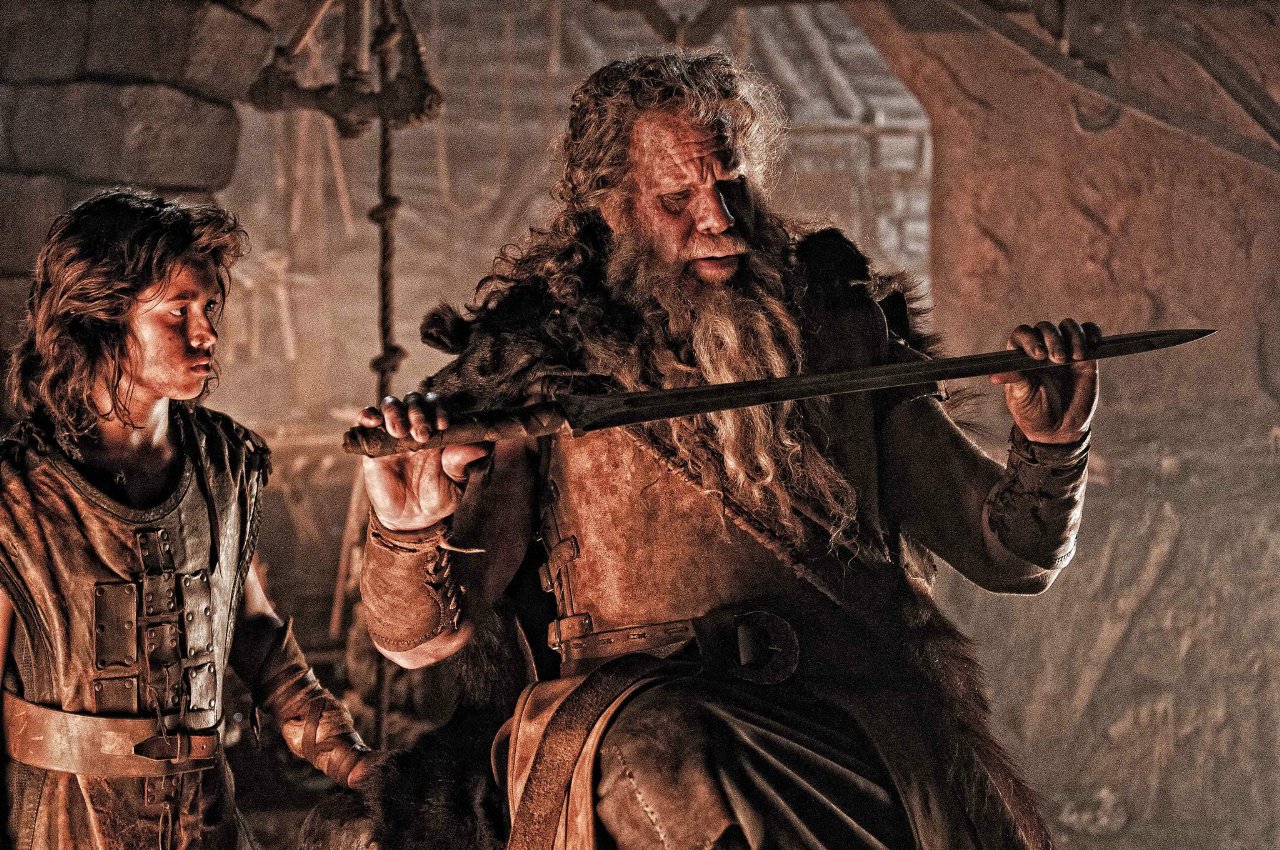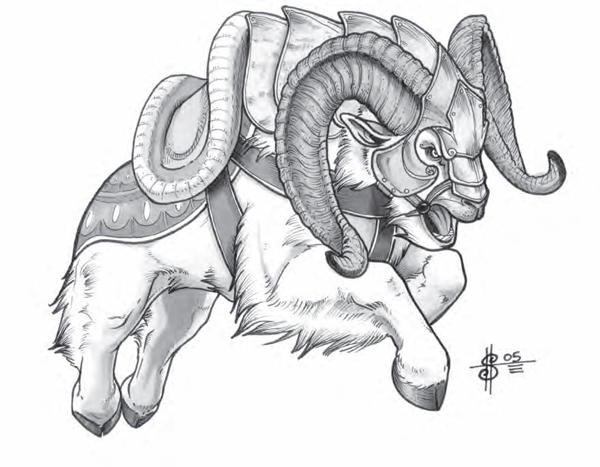The party attacked their fortress, cleaned out the upper levels, then retreated, called in military help from
 |
| from www.elfwood.com by Jay Javier |
The Ahten, for their part, were happy to accept aid from the Dwarves, and allowed the party to claim a chunk of land along the river, the site of an old gnoll camp. Using their dwarf warriors as labor, they constructed a fortified trading post in a motte & bailey style. Since that time, dwarf traders and settlers have moved into the area around the new fort, and the Ahten trade there regularly, eager to exchange their furs and meat for dwarven tools, metal goods and weapons.
Gnollshead Hall is currently a borderlands domain attached to the dwarven Kingdom of Goldenhills Hall. Since the characters who established it are not high enough level to have a domain, it is being administered by a castellan appointed by Duke Arkask Redhammer. When (if) one of the original party members (currently Hilbo Huggin - Fighter 6 and Korrum Kargonath - Cleric 6 remain), they will be able to take Gnollshead Hall over as their domain. Otherwise, it will eventually be gifted to a dwarf noble.
The Ahten allowed the dwarves to claim 1 6-mile hex (32 square miles). Any further land expansion will have to be negotiated with them, as it lies in a valley traditionally claimed by the Crow Clan of the Ahten. The Crow are semi-nomadic, and allied to the dwarves, though.
There are 110 families (550 dwarves) living in the domain.
Current morale is +1.
Gnollshead Hall is a Class VI market.
It is in a borderlands area, and the revenue is 6 gp/family. The river valley where the fort is built flood occasionally, and has very fertile soil. It is good growing land for crops and grazing for animals, which are highly sought-after by Goldenhills Hall. There is also some gold panning in the river, and salmon runs in the fall.
Stronghold: Gnollshead Hall
Wooden drawbridge: 250 gp
400' wooden palisade: 500 gp
400' dry moat: 1600 gp
100' earth rampart 2500 gp
40' stone tower 22500 gp
2 stone buildings (one is buried in the berm) 6000 gp
2 wooden buildings 3000 gp
Stronghold Value: 36,350 gp
Garrison. The garrison is composed of Goldenhills Hall regular troops. There are also 2 heavy ballistae mounted on the tower.
25 dwarven heavy infantry (battleaxe, shield, chainmail): 450 gp
25 dwarven crossbowmen (arbalest, dagger, chainmail): 525 gp
Stronghold Value: 36,350 gp
Garrison. The garrison is composed of Goldenhills Hall regular troops. There are also 2 heavy ballistae mounted on the tower.
25 dwarven heavy infantry (battleaxe, shield, chainmail): 450 gp
25 dwarven crossbowmen (arbalest, dagger, chainmail): 525 gp
Settlement Revenue:
Land: 6 gp/family. 660 gp/month
Services: 4 gp/family. 440 gp/month
Taxes: 2 gp/family. 220 gp/month
Total revenue: 1320 gp/month.
Settlement Expenses:
Garrison: Minimum 330 gp/month. Current garrison value 975 gp (the difference paid by Goldenhills Hall)
Stronghold Upkeep: 182 gp/month
Settlement Expenses:
Garrison: Minimum 330 gp/month. Current garrison value 975 gp (the difference paid by Goldenhills Hall)
Stronghold Upkeep: 182 gp/month
Taxes: 264 gp/month
Tithe: 132 gp/month
Festivals (110*5*4/12): 183 gp/month
Total expenses: 1091 gp/month.
Income: 229 gp/month.
Tithe: 132 gp/month
Festivals (110*5*4/12): 183 gp/month
Total expenses: 1091 gp/month.
Income: 229 gp/month.
Growth: Base growth 15%
Rolled growth 3d10 (morale)
Rolled reduction 2d10.
Right now the party is negotiating to hire a number of hobgoblin mercenaries (with orc auxiliaries) to patrol the area north of Gnollshead Hall. They won't technically be part of the garrison, as the party are paying them separately. We'll see how that turns out.










